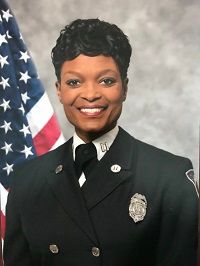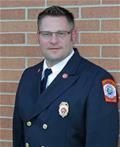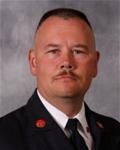News


A New Age of Cybersecurity: How to Protect Against a Cyberattack in This New World
The ongoing turmoil in Ukraine continues to have a rippling effect across the world as Russia’s aggression shows no signs of slowing down. From fuel prices to international diplomacy, the conflict has the potential to bring us to a new dawn in global relations.
In addition to its nuclear arsenal, Russia also has significant weapons at his disposal to wreak havoc on the cyber world. Experts predict ongoing cyberattacks on Ukraine, the United States and other allies—some of which could impact the world like never before.
The federal government has been explicit in its warnings that Russia operatives are planning to attack the infrastructure of the country as a way of fighting against the many economic sanctions placed on Russia by the United States.
U.S. President Biden recently warned the U.S. needs to take cybersecurity risks seriously, because it’s not a matter of if, but a matter of when.
“If you have not already done so, I urge our private sector partners to harden your cyber defenses immediately by implementing the best practices we have developed together over the last year,” Biden said. “You have the power, the capacity and the responsibility to strengthen the cybersecurity and resilience of the critical services and technologies on which Americans rely.
“We need everyone to do their part, to meet one of the defining threats of our time—your vigilance and urgency today can prevent or mitigate attacks tomorrow,” Biden added.
One important step toward cybersecurity is to update Continuity of Operations (COOP) or Continuity of Government (COG) plans.
The Indiana Department of Homeland Security and FEMA offer robust resources to help an agency prepare for a disruptive event. Scott Huffman serves as the Indiana Continuity Planning Manager and has expertise in helping you determine those essential systems and personnel necessary to provide basic services.
Scott Huffman
State Continuity Planning Manager
shuffman@dhs.in.gov
https://www.in.gov/dhs/emergency-management-and-preparedness/continuity/
Please take the time to review your plans and learn more about the real threat of cyber-attacks to Indiana and beyond. Preparation and planning provide the best protection from cyber risks, which have never been greater across the world.
Learn More


Local Fire Chiefs Empowered to Ensure Fireworks Show Safety
Firework shows are a staple of celebrations for many Hoosiers. State Fire Marshal Joel Thacker wants to keep it that way.
“Everyone loves a good fireworks display, but they need to be safe,” said Thacker.
All public fireworks displays, even those organized by local fire departments, must receive an Indiana Department of Homeland Security (IDHS) permit, per Indiana Code 22-11-14 and 675 Indiana Administrative Code 12-9. The permit authorizes the use of professional grade fireworks but is not effective until the local fire chief approves the operator of the show and inspects the display site to determine the display site and plan are safe.
“Many people call and ask the State Fire Marshal to shut down fireworks shows, but that’s really the local fire chief’s responsibility,” said Thacker. “IDHS handles the display permits, but the local fire chief has the ultimate authority to approve displays, or not.”
An IDHS permit is needed not only to conduct the public display, but also to possess and transport the fireworks in the shows. In 2021, IDHS issued more than 880 public fireworks display permits. Still, a common issue is that the display operator, or “shooter,” does not file for a permit at all. In those cases, Thacker recommends the local fire chief take the initiative to contact the shooter and get it resolved.
“If there’s a show in your community, you should know about it. Go to your municipality and ask if there is a signed a contract. If so, reach out to the show operator and ask if they got their permit,” Thacker said. “If you’re not 100% comfortable with the operation, don’t sign off on the permit.”
Fire chiefs should keep their email address updated with their municipality and IDHS to ensure the permit application information goes to the right place in a timely manner. Once chiefs receive notice, they should review the shooter’s resume and inspect the fireworks display site using the NFPA 1123 Code for Fireworks Display.
IDHS Hazmat and Code Enforcement personnel are available to field questions about details of the fireworks codes, including the requirement to have a certificate of insurance as well as how to store the fireworks properly. For example, fireworks should not be stored at a fire department or in a trailer in a driveway.
Mark Hart, deputy chief of operations for Zionsville Fire Department, says a typical inspection takes only 15–30 minutes and primarily involves measuring setback distances, checking the sizes of the shells to be used and making sure the site setup matches the diagram from the permit.
“A lot of times the guy who does the diagram may not be the same guy who is doing the show, and he might just say, ‘I’m just going to move it over here,’ but it’s not where the state approved it,” Hart said.
Sometimes, Hart says, vendors base their application on using 5-inch shells, which requires a setback of 350 feet, but then they may throw in a 6-inch shell. That increases the necessary setback to 420 feet. Hart adds that most operators are honest, but he has heard many negative stories. Although it may be inconvenient, fire chiefs should feel empowered to tell the operator not to deviate from the permit or request that the operator resend the permit with alterations.
“When you sign the permit, you’re putting your reputation, your position, everything on the line,” Hart said. “You’re basically taking the responsibility for it.”
Fire chiefs and their fire marshals are encouraged to take the Guidelines for Public Fireworks Displays course offered on the Acadis Portal. It guides departments through the legal requirements for fireworks displays to ensure operators and spectators are safe from hazards. IDHS also offers a checklist and a brief online video with an overview of the process.


Fireworks Sales Inspections
All fireworks manufacturers, distributors and sellers in Indiana are required to receive IDHS permits. IDHS inspects these locations as part of the permitting process. In 2021, the agency inspected more than 600 fireworks sales locations. Local building officials often inspect these stores too, since they are considered hazardous locations and most appear for a short time.
The most common retail violation found by IDHS is the location being over its weight limit. Fire and building codes state that non-sprinkler locations are limited to 500 pounds of explosives and for sprinklered locations, it is 1,000 pounds. It does not take many fireworks to reach those limits, says IDHS Code Enforcement Inspector Rob Miller.
Other code violations local inspectors should keep an eye out for are having the necessary fire exits, no-smoking signs and documentation of sprinkler system maintenance.
In addition to an IDHS permit, a Bureau of Alcohol, Tobacco, Firearms and Explosives (ATF) license or permit is required to be able to sell, transport, receive or use display fireworks. The consequences of not following these procedures or having the correct permits can be severe: In July 2020, an Ohio resident died after being struck in the head by a display firework that was sold to him illegally in Indiana. The ATF launched an investigation and charged the seller with two federal crimes, each punishable by up to 10 years in prison.
The ATF finds that illegal explosives often are made by manufacturers without a license to operate and are sold without the required permit. Some of these fireworks are poorly made and are sensitive to heat, shock, electrostatic discharge and friction. These fireworks can cause injury or death when ignited, either accidentally or intentionally.


Miller says it is difficult for the average person to differentiate between a legal or illegal firework, since they often look the same. Here are some indicators that fireworks may be illegal:
- Fireworks in brown paper wrapping instead of cellophane
- Items in boxes that have no graphics or markings
- A firework that is being sold in a non-commercial location, such as a vehicle or residence
- Seller has no evidence of a receipt or commercial packaging
- Seller cannot say where the firework was originally purchased
If you recognize any of these signs, the fireworks may be illegal and potentially dangerous. Report the seller to the ATF at 1-888-283-2662.


Foam Collection Program Prioritizes Firefighter Health
Governor Eric J. Holcomb called on fire departments across the state to take advantage of Indiana’s new foam collection program, which offers free collection and disposal of PFAS foam, a known contaminant.
Holcomb was joined recently by fire leaders from across Indiana at the Greensburg Fire Department to celebrate the official launch of the Class-B PFAS Foam Collection Initiative. With help from a grant, the Indiana Department of Homeland Security (IDHS) and the Indiana Department of Environmental Management will offer the free pickup and disposal service to fire departments that register on the IDHS website (dhs.in.gov).
“Indiana has chosen to be a leader in this PFAS foam program, because, frankly, firefighting is hard enough without having to worry about these hazardous chemicals,” Holcomb said. “We hope more departments will sign up so we can do all we can to protect Indiana firefighters.”
About 200 fire departments have already signed on to participate as of April 1, and about 50,000 gallons of foam has been identified that will be safely disposed of at no cost to the departments. Representatives from US Ecology will be contacting departments directly in April to arrange a pickup for PFAS material to prepare it for disposal.
The Indiana Class-B Foam Collection Initiative makes Indiana one of only a handful of states in the country to create a PFAS foam disposal program. This program allows the state to offer a free pickup and environmentally friendly disposal service, which saves fire departments thousands of dollars in disposal costs while protecting Hoosiers and the Indiana environment.
PFAS are widely used, long-lasting chemicals, components of which break down slowly over time. Because of their widespread use and their persistence in the environment, PFAS can be found in the blood of people and animals all over the world and are present at low levels in a variety of food products and in the environment. Extended exposure to PFAS chemicals has been linked to four of the top eight types of cancer most common to firefighters: testicular, prostate, mesothelioma and non-Hodgkin’s lymphoma.
In 2020, Indiana law prohibited the use of PFAS foam for any training purposes.
“This collection program is an opportunity for the State to honor those men and women who sacrifice so much for us every day,” State Fire Marshal Joel Thacker said. “PFAS exposure represents a hidden danger to firefighters, and Indiana is determined to protect them as much as possible through this program.”
For more information, visit the IDHS website.


Noblesville Firefighter Receives Fire Officer Credentials
A Noblesville Fire Department lieutenant is now among an elite group of firefighters. Lt. Scott Hunter is one of only 602 firefighters in the world to complete and receive the Fire Officer (FO) credentials from the Commission on Professional Credentialing (CPC).
The designation is a voluntary program designed to recognize individuals who demonstrate their excellence in seven measured components: experience, education, professional development, professional contributions, association membership, community involvement and technical competence. In addition, all applicants must identify a future professional development plan.
The FO designation program uses a comprehensive peer review model to evaluate candidates seeking the credential. The CPC awards the designation only after an individual successfully meets all the organization's stringent criteria. Lt. Hunter says the application process can be quite intimidating. But he called it a very humbling experience.
Hunter was drawn to public safety from a young age. "In high school, I volunteered in a local emergency department and was part of an ambulance services' explorer program. After my first year of college, I enlisted in the Army Reserves as a combat medic and surgical technician. But it was as I was graduating college, I realized I wanted to pursue a career in the fire and emergency services," said Hunter. Since graduating college, Hunter stayed on track with his passion. He’s now completing year 13 of his career.
Hunter said he enjoys the variety of work this field brings, “We can respond to multiple medical runs, water rescues, and structure fires in a single shift." He also appreciates that despite the rapid growth of Noblesville, the fire department remains tied to the community through numerous public education events and school programs.
Hunter said earning the designation helps him keep pushing himself in his career. "It was a way to hold myself accountable to my peers to continue my service and development," said Hunter. "The Fire Officer designation challenges me to better myself continuously and contribute to the communities I serve," he added. The Fire Officer designation lasts three years. To keep it, a FO must follow a renewal process that re-evaluates professional development, professional contributions & recognition, professional memberships and affiliations, and community involvement since the last application. Hunter said he "definitely planned to maintain the designation.”
Noblesville Fire Chief Matt Mitchell said of Hunter's credentials, “Achieving this designation signifies Scott’s commitment to his career in fire and emergency services and his emphasis on professional growth. I’m proud of Lt. Hunter for earning this distinction, and the example it sets for his fellow firefighters with life-long learning, skill development and community service.”

IDHS fire investigator Joe Tanasovich (left) presents State Fire Marshal Certificate of Appreciation to Clinton County sheriff's deputy Jared Yoder (right).

IDHS fire investigator Joe Tanasovich (left) presents State Fire
Marshal Certificate of Appreciation to Clinton County sheriff's
deputy Jared Yoder (right).
Clinton County Sheriff's Deputy Receives Certificate of Appreciation
One of the core reasons first responders sign up for the job is to help Hoosiers. Police officers, firefighters and EMS personnel go out every day to assist people in need ... often without a second of hesitation. It’s the urge to do what’s right that the State Fire Marshal wants to highlight in the first responder community—even when the outcome is tragic.
In February, Clinton County Sheriff’s Deputy Jared Yoder received a Certificate of Appreciation from the Indiana State Fire Marshal’s Office for his actions when he was first to the scene of a fire.
On Jan. 14, Yoder received a call about a house fire with entrapment at a rural home. As he pulled up to the scene, he could see large flames and heavy smoke coming from the house. A family member, who had made it out of the house, told him there were two children trapped inside. Yoder immediately went into the house to try to find the children.
“The smoke made the attempt very difficult. I could not see anything. I had a flashlight, but I could only see inches in front of the flashlight due to the smoke, making my light for the most part useless,” he said. “I had to hold my breath for a long period of time. The heat was extreme, and the popping of the fire made it so much more intense.”
“Without hesitation, Deputy Yoder made a significant attempt to rescue the two juveniles by entering the burning building, without regard for his own safety. In this moment, he went above and beyond the call of duty,” said IDHS Fire Investigator Joe Tanasovich.
Unfortunately, the intense fire made it impossible for Yoder to locate the children and they passed away.
Yoder says this event was a wake-up call.
“Everyone stresses the importance of having and testing your smoke alarms. I have been guilty of pushing these off as well. Unfortunately, it takes extreme and sad events like this to really open your eyes. I will ask everyone again to either get smoke alarms if you don't have them or test them regularly because they will save lives!”
To nominate a person for a State Fire Marshal or Indiana EMS award, please visit the Indiana Department of Homeland Security website.


Legislative Session 2022 Recap
The 2022 Legislative Session is complete. The Governor signed two bills that affect IDHS and stakeholders. Descriptions of the two bills are below.
HB 1314, Public Safety Matters
- Requires IDHS, IDOH, the Statewide 911 Board and the Integrated Public Safety Commission to make recommendations to the General Assembly regarding ways to increase 911 system operability between counties and how to improve trauma care in Indiana.
- Increases the amount of money in the Regional Public Safety Training Fund by reallocating how funds collected from the Public Safety Fee are distributed.
- Not increasing any fee, just changing how it is distributed
- Changing the distribution of funds will allow IDHS to offer more education and training opportunities to the public safety community in Indiana.
- Increases benefits for IDHS fire investigators
- It makes it easier for IDHS fire investigators to obtain death benefits if they die in the line of duty by granting a presumption of death in the line of duty for certain cancers and illnesses.
- Allows their surviving spouse and children to receive healthcare insurance from IDHS.
SB 381, Regulation of Radioactive Material
- Allows IDHS to become an "Agreement State" with the federal Nuclear Regulatory Commission.
- This enables IDHS to assume regulatory responsibilities for certain radioactive materials in the state and partner with the industry to ensure these sources are used safely.


Recent Legislation Moves Indiana Toward NRC Agreement State
Governor Eric J. Holcomb signed Senate Bill 381 into law on March 7, 2022, setting the framework for Indiana to enter into an agreement with the U.S. Nuclear Regulatory Commission (NRC). Currently, the NRC is the main regulatory authority for radioactive materials in the state of Indiana with IDHS as the main response body and regulator of Naturally Occurring Radioactive Material (NORM). An agreement would allow the state to assume regulatory authority over industrial, medical, academic and general use of radioactive materials. After an agreement is in place, the NRC would assume a collaborative role and ensure National Material Program standards are met.
The process to become an agreement state takes three to five years as the state develops the program and submits a full application to the NRC for review and approval. Holcomb said this agreement has his full support. “As Governor, I will ensure that Indiana dedicates the resources necessary to meet the requirements of the Agreement. Upon becoming an Agreement State, we will work to create an accessible and efficient regulatory program for the benefit of our citizens and communities and make available resources for sustainable radiation safety,” said Holcomb.
IDHS has a team ready to tackle this program and push to make this agreement official. IDHS must prove that it has the processes, standards and personnel in place before the NRC will sign the agreement with the state. Radiation Programs Director Sarah Chaney said of the work her team is taking on, “The state of Indiana is actively working to build a well-developed, trained team that will be effective in protecting public health and the safety and security of radiological materials.”
During the multi-year process, IDHS must hire health physicists that will focus on the inspection and licensing of facilities and individuals who possess, storage and use radioactive material within the state. The training required by the NRC to become an Inspector/License Reviewer is two years of intense courses that the NRC provides to the state.
If you have any questions regarding this agreement, contact Chaney at schaney@dhs.in.gov.


CyberStart America Deadline Looms
The deadline is coming soon for kids in your community to sign up for CyberStart America. This program gives students in Grades 9-12 free access to the world-renowned CyberStart game. It is an immersive cybersecurity training game for high school students, with more than 200 unique security challenges that students can solve as cybersecurity agents investigating criminal gangs. Students get access to an extensive field manual featuring video demos, top tips and essential background information to help with challenges. By signing up for this program, students can unlock a hidden interest, progress from novice to expert and demonstrate skills to win scholarships.
Students who score highly during the 2021-22 competition will be invited to apply for a scholarship award offered by The National Cyber Scholarship Foundation (NCSF) once the program closes in late April. 704 Indiana students from 76 schools have registered to play the game so far, and 13.78% of Hoosier students who registered qualified for the semifinals, bringing Indiana into the top 10 states with semifinalist qualifiers.
Given the current environment with cybersecurity concerns coming from abroad, getting kids used to being secure online sets them up for a safer future. In addition, the competition provides a solid foundation for any child who may pursue a computer science or cybersecurity career.
Key Deadlines
- Registration ends: April 26, 2022
- Gameplay ends: April 27, 2022
- Top players invited to apply for scholarships: Apr 29, 2022
- Scholarship application deadline: May 13, 2022
- Scholarship winners announced: Jun 1, 2022
Learn more at the CyberStart America website.
Center Grove Emergency Operations Center Opens
Crisis events at schools have unfortunately become more common in the U.S. No community wants to think about whether it could “happen here.” The Center Grove Community School Corporation is making sure it is prepared for anything. Center Grove already has an established police department in their school system. This year, the school corporation teamed up with White River Township Fire Department and the Bargersville Community Fire Department to build an Emergency Operations Center (EOC) on school grounds. The Center Grove EOC provides central monitoring for nearly 700 security cameras, alarms and severe weather conditions.


Grants Update
IDHS will be purging cancelled grant applications and in-process applications that were never submitted in IntelliGrants. Declined or denied applications will be kept in the system.
IDHS now has a form to delete unwanted applications in IntelliGrants. Before filling out the form, please be sure that you have the document ID number for each application.
A maximum of five applications at a time can be requested on one form. Enter only one application name to be deleted per field. If you have more than five applications to delete, please submit multiple forms.
Access the form here: https://app.smartsheet.com/b/form/cd899a9b13634985b35d30d387d14f58
The developer will purge the applications by the following quarter end dates: June 30, September 30, December 31 and March 31, 2023.
If you have any questions, contact the IDHS Grants Section by filling out a grants support ticket.
DUNS Number Change
As of April 4, the federal government is no longer using the DUNS number to uniquely identify entities and instead using the Unique Entity Identifier (UEI) created in SAM.gov. To receive federal funding, an entity must have an active UEI number. Any grants awarded from IDHS now require an active UEI number. Please prepare accordingly to have an active UEI prior to applying for grants.
This change allows the government to streamline the entity identification and validation process, making it easier for entities to do business with the federal government.
Current SAM.gov registrants already have been assigned their UEI and can view it within SAM.gov. This includes inactive registrations. The UEI can be found below the DUNS Number on your entity registration record. Remember, you must be signed in to your SAM.gov account to view entity records.
IDHS recommends that applicants review the SAM.gov database to ensure their UEI number is updated and active.
FDIC Speakers
FDIC International is taking over the Indiana Convention Center on April 25-30! This conference offers firefighters from around the world to learn from world-class instructors, attend workshops and get hands-on training on the latest products and services available to the industry.
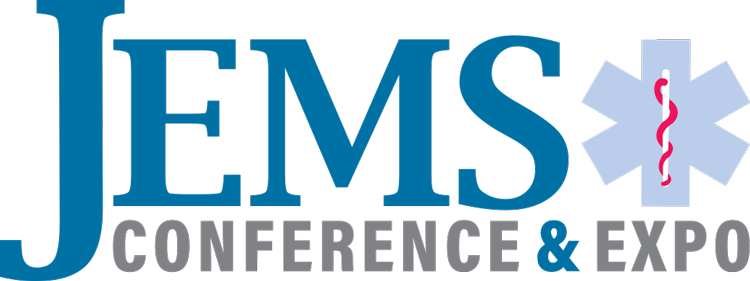

JEMS Conference & Expo
In tandem with the FDIC, the JEMS Conference & Expo is making its debut this month, April 25–30.
The conference brings together paramedics, emergency medical technicians, medical directors and executives from EMS providers including state and private agencies, third service and fire. This conference provides education, training peer-to-peer sharing and networking opportunities.
This conference is happening at the Indiana Convention Center alongside the FDIC. You can register now!
FEMA Provides Over $2 Billion in COVID-19 Funeral Assistance
Assistance Still Available
As of April, FEMA had distributed more than $2.1 billion in financial assistance given to families who’ve lost a loved one to COVID-19. $43 million of that amount went to Hoosier families. But the program is not done yet. FEMA still has financial assistance available.
Financial assistance is available for COVID-19 related funeral expenses incurred after Jan. 20, 2020. IDHS highly encourages people to use this benefit to ease the monetary burden created by losing a family member to COVID-19.
More than 22,000 Hoosiers have died from COVID-19, but only 6,200 families have applied for and received funeral assistance.
To be eligible for funeral assistance, an applicant must meet the following conditions:
- For deaths that occurred after May 16, 2020, the death certificate must indicate the death was attributed to COVID-19.
- For deaths that occurred from Jan. 20 to May 16, 2020, any death certificate that does not attribute the cause of death to COVID-19 must have an additional signed statement listing COVID-19 as a cause or contributing cause of death.
- The signed statement must be provided by the original certifier of the death certificate or the local medical examiner or coroner from the jurisdiction in which the death occurred. The statement must provide an additional explanation linking the cause of death on the death certificate to COVID-19.
Applicants are encouraged to keep documentation of the funeral expenses and the death certificate.
Covered expenses typically include, but are not limited to:
- Funeral services
- Cremation
- Interment
- Transportation for up to two individuals to identify the deceased individual
- Transfer of remains
- Casket or urn
- Burial plot or cremation niche
- Marker or headstone
- Clergy or officiant services
- Arrangement of funeral ceremony
- Use of funeral home equipment or staff
- Costs associated with producing and certifying multiple death certificates
- Additional expenses mandated by any applicable local or state government laws or ordinances
Hoosiers can apply by calling (844) 684-6333 to speak with a FEMA representative. More information is on IDHS’ Individual Assistance webpage and on FEMA’s COVID-19 Funeral Assistance website. Funeral Assistance for COVID-19 related items is made available through the Coronavirus Response and Relief Supplemental Appropriations Act of 2021 and the American Rescue Act of 2021.
Upcoming Trainings
Register for all classes in Acadis Portal.
Professional Emergency Manager (PEM) Program Schedule
- April 19-21: L105: Public Information Basics (Plainfield)
- May 9-11: L102: Science of Disaster (Plainfield)
- May 17-18: L103: Planning: Emergency Operations (Evansville)
- Sept. 7-8: L146: HSEEP (Evansville)









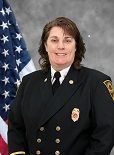


)
